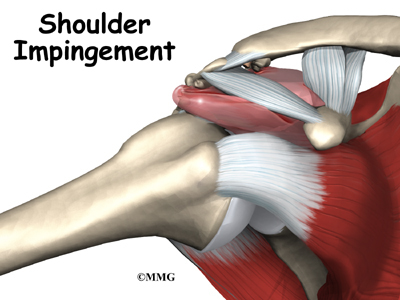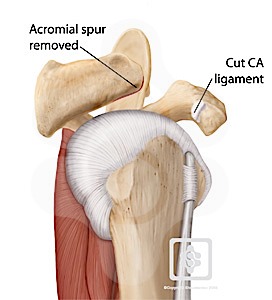Shoulder Impingement
What is shoulder impingement? – Blog By Ryan Harris

Shoulder impingement is not a specific condition, rather more of a symptom of possible shoulder injuries. It can be a symptom in a rotator cuff injury, labral injury, shoulder instability, biceps tendinopathy, improper scapula control and bone spurs.
Impingement is the term used to describe the compression of the rotator cuff tendons and the bursa in the subacromial space. Consequently, with repetitive compression, the rotator cuff tendons can become irritated and inflamed which cause them to thicken. This thickening can cause further problems as it decreases the room in the subacromial space further.
Causes
In a normal shoulder, the rotator cuff muscles work together to centre the humeral head in the glenoid during movement.
There are two main types of impingement:
-
Primary impingement (structural)
Primary impingement occurs as a result of structural changed in the shoulder joint causing the subacromial space to be smaller. The presence of a hooked arcomion is one example of a possible structural change. The subacromial space is now smaller and as a result, the risk of irritating and compressing the underlying tissues increases.
-
Secondary impingement (movement).
Secondary impingement occurs as a result of a dysfunction within the normal shoulder mechanics during movement. As a result, it is common in patients who have repetitive overhead movements, acute trauma and/or poor posture. Identifying the underlying cause of the impingement is important for treatment.
Symptoms
Common symptoms of shoulder impingement include:
- Anterior and/or lateral shoulder pain with overhead activity,
- A painful arc of shoulder pain that starts just before your arm reaches shoulder height,
- Reaching behind the back.

Treatment
After a thorough assessment from your physiotherapist to determine the underlying cause of your impingement, a structured treatment plan will be developed focusing on:
- Early stage pain relief and protection,
- Restoring the full range of motion of the shoulder,
- Scapular Control,
- Rotation Cuff Strengthening,
- Thoracic Mobility and Manual Therapies,
- Maintenance of other joints. E.g. Neck,
- End stage: Returning to sport specific activities.
Subacromial Decompression
After a period of conservative treatment, surgery may be appropriate.
A subacromial decompression is routinely used to increase the subacromial space which allows the underlying tissues to move through without restriction. The release of ligaments and the shaving of bone spurs is how this is accomplished.
After a subacromial decompression it is necessary to continue to see a physiotherapist to regain function of the shoulder and for prevention of other conditions.
At Total Physiocare, we have a wealth of experience in sporting injuries and management.
Book an appointment today for your assessment!
Blog by Ryan Harris (Physiotherapist)



